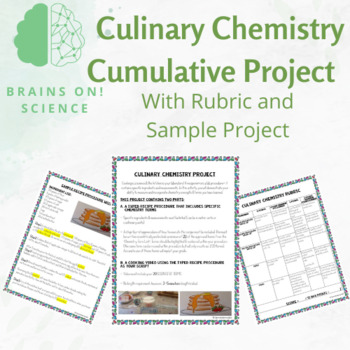Chemistry Cooking Video Cumulative STEM Project for Middle School High School
- PDF
- Easel Activity
What educators are saying
Also included in
- Set of three cumulative middle school science performance tasks/project assessments. Covers three NGSS overarching units:Energy/ Earth & Human ActivityMotion & Stability: Forces and Interactions Matter & Its InteractionsBundle Includes:Chemistry Cooking Video STEM Project Energy EfficienPrice $14.00Original Price $18.00Save $4.00
Description
This chemistry cooking video project is a fan favorite in my classroom. I use this as a cumulative assessment at the end of my chemistry unit. Students will find a recipe for any meal/baked good they desire and will create a recipe procedure for that meal/baked good using 20+ chemistry terms. Then, students will create a "how to" cooking video using the typed recipe procedure as their "script". I usually encourage students to try making a dinner for their family! Parents love this! Sharing these videos with the class is always a joy! This is also a great portfolio piece for my 8th grade students applying to rigorous high schools.
Included in this product:
- "How I Use this Product" page with lesson plan and helpful hints
- Culinary Chemistry Project Requirements/Guidelines for Students
- Culinary Chemistry Project Term List for Students
- Culinary Chemistry Project Rubric for both recipe procedure write-up and video
- Culinary Chemistry Recipe Write-Up Sample for students or teacher







